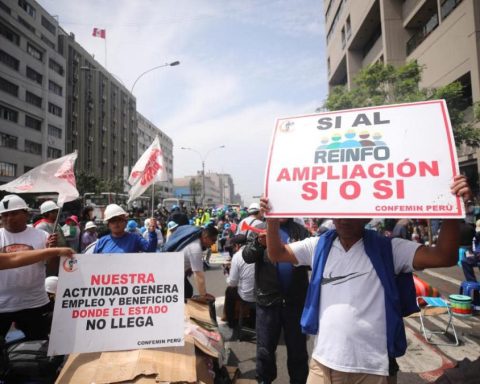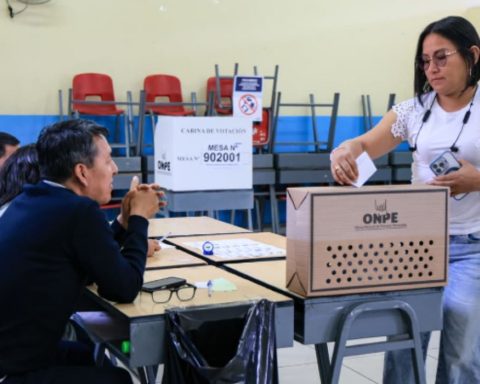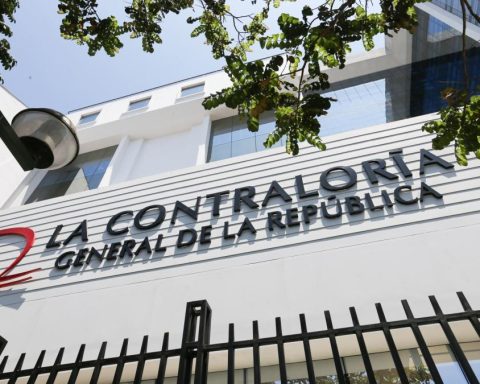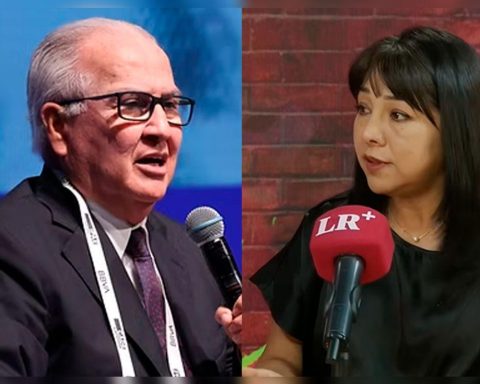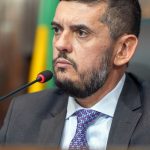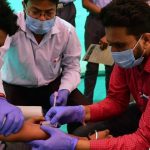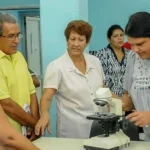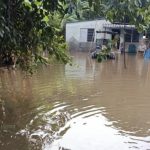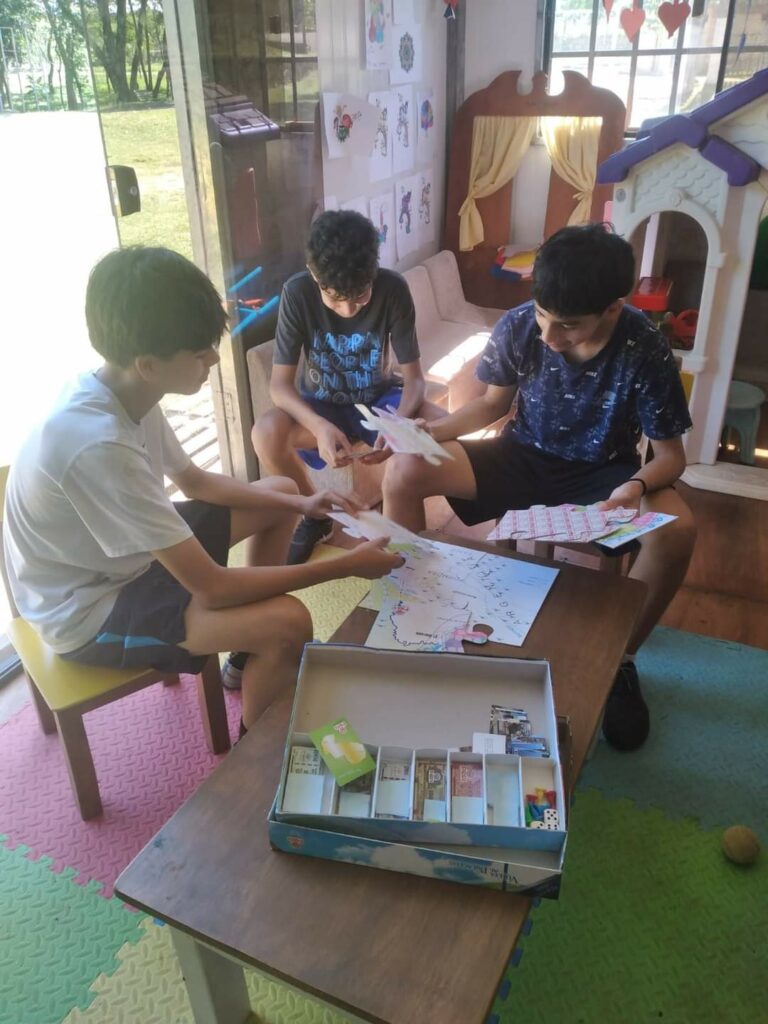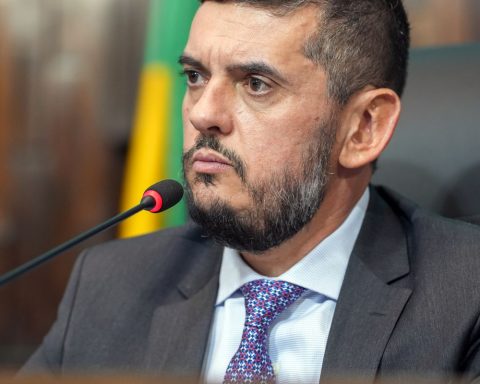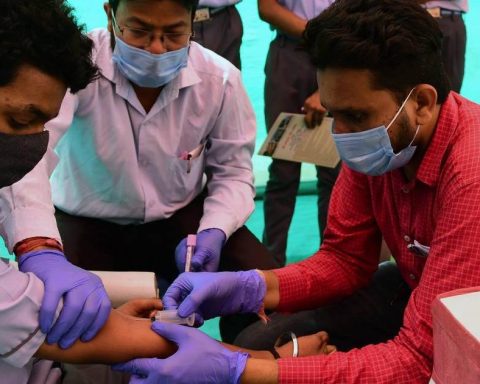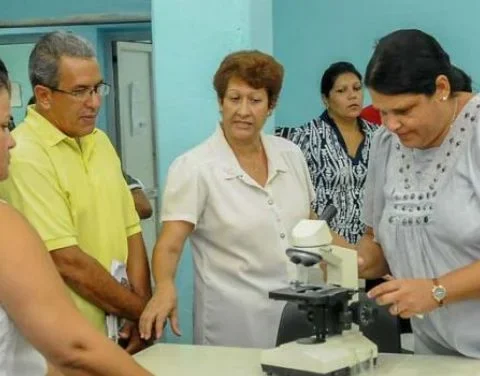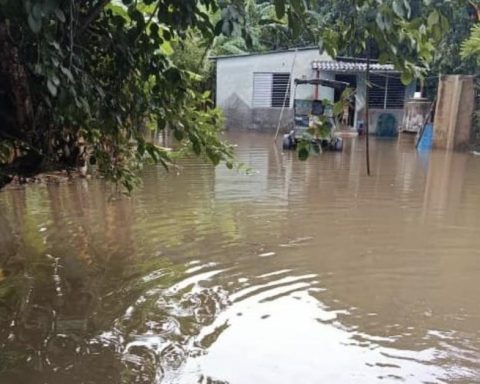Peru is experiencing a complex situation as a result of the violent protests that register in the country against the government of Dina Boluarte. For Gianfranco Castagnola, “we are paying for the mistake” of having chosen someone like Pedro Castillo; However, he pointed out that, with the departure of the former president, “we have removed the tumor” and now it is time to go through “very harsh chemotherapy.”
Have we seen in recent decades a similar scenario as the one we are experiencing now?
It is difficult to find a parallel because different situations are coming together. First of all, I think that we are undoubtedly in a very delicate and complex situation because the political actors that we have today, who should find a way out, a solution to the impasse we are in, have sidelined. We do not have political forces that mediate between what the population wants and those who make decisions. Congress has decided not to stir the issue. Therefore, there are only two actors left, the population, the street that protests, whatever we want to call it, and the government. And between them a situation is going to be defined that we hope will be channeled through democratic channels. Faced with this we have a street, a protest that has its own dynamics, and a government that is extremely fragile. Therefore, today, there really is no visibility on what can happen going forward. Today, the short term is one week, the medium term is one month. The long term is one quarter. That is what we have today.
A great uncertainty.
Now, this, which may sound like a slightly pessimistic vision, I contrast it with a slightly more optimistic one. I believe that today, with everything that we are experiencing, with some tragic situations that we have experienced, with everything, Peru is better than three months ago because we have come out of a disastrous, incompetent, corrupt government, like that of Pedro Castillo. We are paying the cost of having made the mistake of having elected him, but finally, after a year and a half, I believe that the mere fact of leaving the government of Pedro Castillo already puts us in a better situation. And I allow myself a figure: I think we have removed a tumor, but, when we have removed the tumor, we have found that it was bigger than we thought and that it had metastasized. Now we have to go through a very harsh chemotherapy, which we hope the body will endure, and if it does, as all Peruvians hope, so be it, we will be better off without that tumor.
There are business unions and small businessmen who are beginning to hold Congress responsible for the inaction on the early elections. This also happens against those who block roads. What is the main person responsible for not being able to get out of this crossroads?
It is difficult in a complex situation such as the one we have experienced, so delicate, to look for specific responsible parties. I think there are many factors that have contributed to this social and political crisis of the process that has occurred. And I think there is a first problem and that is that the polarization is so great that we are not even capable of agreeing on the facts. And if we do not agree on the facts, we are less likely to agree on the assignment of responsibilities and solutions. For example, it is evident that former President Castillo –for many, and I am one of them– carried out a coup, ridiculous, folkloric, and it failed, yes, but he carried out a coup. Now, there is a part of the population that believes that he did not stage a coup. So, if we don’t agree on that, how can we agree on the exits? Having said that, I think we have to be very focused in the analysis of the violence and the protests that we have had. And I think it is appropriate to differentiate, at least, three forces that have participated in this.
Which were?
There are those who have legitimately come out to protest because they identified with former President Castillo, they understood that he had been unjustly vacated and it is a perception with which I personally disagree, but it is their perception and they went out to march, and there were people who went out to march in peace . And that is part of the population that is mainly in the south, in rural areas. That existed mostly in December, probably some in January. On this, radical groups linked to (Evo) Morales, linked to extremely violent terrorist movements, which used the former as cannon fodder, joined, and I hope that the Police continue to identify them and put them inside because they are those, the latter. and not the first, terrorist elements. And to tell these second terrorists that it is not terruqueo, is to call things as they are. Not the first, obviously. And on top of this there is a third very important element, which is the entire illegal economy. Money has been pumped in, specifically from the radicals, to create a situation of chaos; there is a segment of the illegal economy that had an implicit or explicit agreement with the previous government. So, all of this shaped up into something much more complex. Having said this, I believe that, after the terrible incidents in Juliaca, the Police and the Armed Forces have generally acted very well, with professionalism.
Can violent riots return?
I think that little by little the country is being ordered and I hope it continues like this. It is very likely that in the future there will be riots again, attempts at violence, but this situation cannot continue. People have to work, they are demanding work spaces, calm down, a return to normality. This situation cannot be prolonged indefinitely and the failure of the Taking of Lima. I think it has helped deflate the most radical sectors a bit, but this does not end now. I reiterate that the visibility we have is from one to three months, not much beyond.
And how can this end up affecting the growth projections for this year for the southern regions and the Peruvian economy?
First, all this crisis situation of violence, uncertainty, a lot of uncertainty, generates a more general impact and another more focused on sectors and regions. The generalized is that, due to the blockade of the roads and that the food is not arriving, the provisions are not arriving, the inflation has stopped decreasing. In the southern region, inflation has not only continued to decrease, but is in double digits, above 10%, and that hits families tremendously. The price of the chicken? I think that in some cities it has gone up 30% or 40%; The gas has doubled, it’s crazy. This is directly hitting the family, especially families with fewer resources. The second point is the exchange rate. This kinder world that I mention has generated that, in a good part of the countries of the region, the currencies appreciate. In Peru it has depreciated for fear of the political situation and depreciation is rain on wet in the case of inflation. Third is the uncertainty of only being able to look three months ahead, which freezes investment decisions. Fourthly, the execution of public investment in an environment of occupied highways is difficult. Therefore, the construction is also affected. That at a general level.
Mining was hit hard…
At the sectoral level, mining is badly hit. So is the agribusiness and especially tourism. In mining we have two mines that represent 16% of Peru’s copper production, which is a lot, which are Las Bambas (Apurímac) and Antapaccay (Cusco), which are closed. In agriculture, the Ica Valley has serious problems getting its products out, affecting its crops, such as grapes, which account for more than a third of Peruvian agro-industrial exports. And, as for tourism in Cusco and in the south in general, it is really dead. It falls after two years of pandemic. Tour operators, hotels, tour guides are having a very hard time. Unlike mining or agriculture, where the social situation is barely corrected, activity rebounds because the mine begins to produce again, for example, the damage to tourism in the south is something that will take time to recover from.
Look: Protests in Peru: US$600 million will be lost due to the lower arrival of international tourists
Is there something that does not work…
If one looks at Peru’s challenges five or six years ago, there were three areas where things had to work for Peru to take a significant leap. The economy provides resources; if the economy does not work, there are no taxes, there is no employment, there is nothing. The second area is the functioning of the State, which has to function well to provide services and fulfill its obligations to citizens. I speak from a State that has to provide education, health, security, issue an ID to the citizen, attend to him in an emergency, attend to poor citizens as a direct subsidy system. The state has to work. If it doesn’t work, the citizen feels that he receives nothing and feels abandoned. And the third thing that has to work is the political institutionality because that is where the Congress and the Executive branch are fed, which are the ones that run the country.
Was the problem the functioning of the State?
For 20 years, this entire century, we have spent discussing the economic model. And we economists have spent it defending the economic model as best we could, which is the only one of these three elements that has worked reasonably well. It could work better, but in general it works. The economy has worked these 20 years. Regarding the functioning of the State, many of us criticize regionalization, the way to decentralize the country. And one of the reasons why we have a State –and a dysfunctional one– that has not been able to fully fulfill its responsibilities is due to this regionalization, and on that there were many papers, many documents, many events and very little action. And we have allowed the State to fragment and we have a State that does not fulfill its basic functions. And about political institutions? It was discussed late, badly, with some proposals out there. So, instead of discussing how to improve political institutions and how to improve the functioning of the State, we have spent 20 years talking about the economic model, which is the only one of these three pillars that has worked.
KEEP IN MIND
Gianfranco Castagnola is executive president of Apoyo Consultoría and has been director of the Central Reserve Bank of Peru (BCR).
He is an economist trained at the Universidad del Pacífico and has a master’s degree in Public Policy from Harvard University.
RECOMMENDED VIDEOS
:quality(75)/cdn.jwplayer.com/v2/media/ostE05ZF/poster.jpg)

